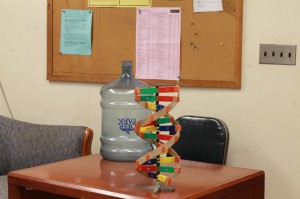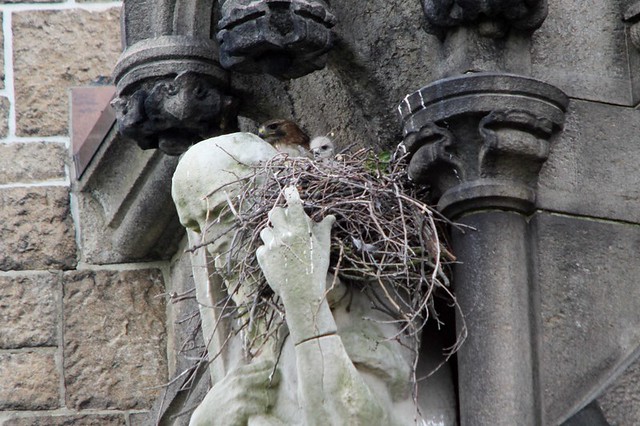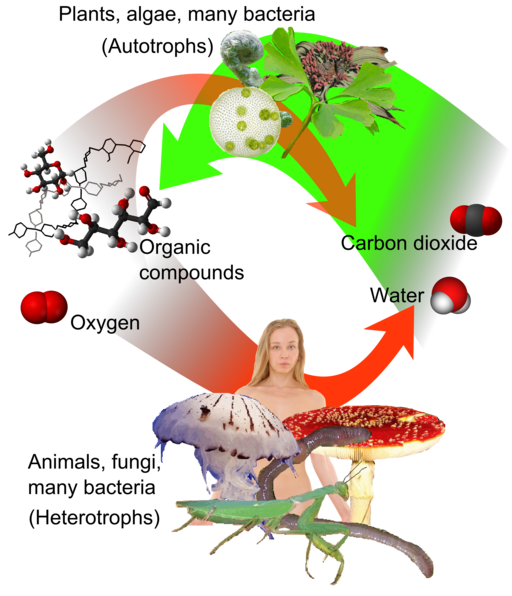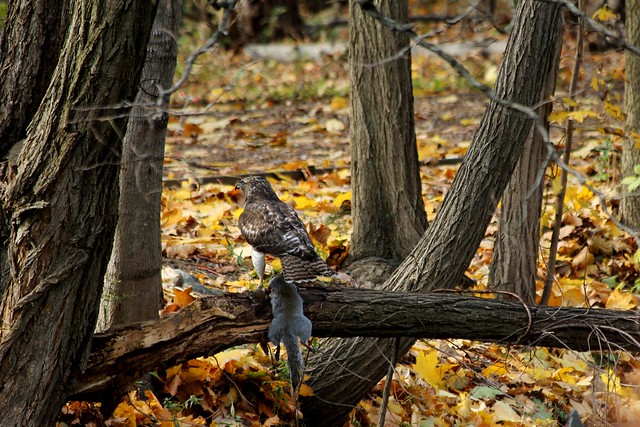Magnification
Magnification is the process of enlarging the appearance of an object. We calculate the magnification of an object by indicating the fold change in size. So if something appears to be double the size of the real item, then it is obviously magnified 2X. Because there is a magnification by the eye-piece (ocular lens), as well as the objective lenses, our final magnification of an item is the product of those two lenses.
We can calculate that as:
Magnificationtotal = Magnificationobjective X Magnificationocular
Field of View (FOV)
In a microscope, we ordinarily observe things within a circular space (or field) as defined by the lenses. We refer to this observable area as the field of view (FOV). Understanding the size of the FOV is important because actual sizes of object can be calculated using the Magnification of the lenses. What are the effects of magnification on FOV?
In image 1, we can see a model of DNA on a table with a water bottle and a large area of the room. Image 2 displays less of the room in the background but the DNA model is larger in appearance because the magnification is greater. In image 3, we no longer see evidence of a door and the DNA model is much larger than before. In image 4, we no longer see the table the model and water bottle rest upon. While the last image is largest, we see less of the surrounding objects. We have higher magnification at the cost of field of view. FOV is inversely related to the magnification level.
Depth of field
We notice that when we observe 3 overlapping threads of different color under a microscope, we can focus on one thread at a time. Similarly, when we zoom in a great deal on the DNA model above, we notice that the print on the water bottle is not sharp.
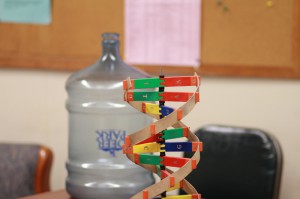
Highest Magnification with shallow depth of field. Notice how the label on the water bottle is blurry while the lettering on the DNA model is sharp.
We know that the water bottle is behind the DNA molecule. Under the microscope, the threads of differing color are also stacked on top of each other. We recognize that they are in different planes because they are three dimensional. Each thread has depth and do not occupy the same exact space. If we focus on the print of the water bottle on the image above, we would no longer see the lettering on the DNA molecule sharply. We refer to this concept as Depth of Field (DOF). Under the microscope, at a low magnification, we can make out fewer finer details. However, most items appear on the same plane in this case and or comparably sharp. But as we increase the magnification and see finer details, the distances between the various planes in view become more apparent. We can see a similar phenomenon at low magnification of the DNA model. At the low magnification, we may not be able to read the print on the water bottle, but the bottle and DNA molecule are of a similar distance from our view that the small difference in apparent depth is not as noticeable. We can still draw on other visual cues to know that the bottle is behind the model, but the sharpness of both items are equivalent.
Real biological examples
We can see the concepts of FOV and DOF in the following pictures.


In an even more extreme close-up (higher magnification), we would have difficulty focusing on both the eyes and beak since there is depth and distance between those features.
How do we use microscopes
In our lab, we look at some pond water. What do we see? Why is this significant? How does the microscope help us study these items? What is the utility of the the concepts of magnification, FOV and DOF when we use microscopes to study biological samples?



